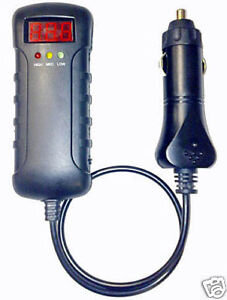Whilst we are taking about this...
How do people charge up their leisure batteries if they stay put for more than a day running a fridge?
Thinking aloud
Start up the truck for an hour?
Solar panels? If fitted to truck it means leaving the truck in the sun.
Don't use the fridge when stopped for more than a day or so?
Carry a small generator?
Have two leisure batteries?
Or just not stop for more than a day? (me)
Lorin, if it was me I would spend my money an a new pair of Toyota batteries for stating, then fit and forget them.
Fit a manual switched feed to your leisure battery for charging and control it yourself, zero to go wrong and will cost you less then a tenner. This is what Chris Scott / Matt Savage fitted to his Mazda pickup although I think I had my setup fitted before they did

How do people charge up their leisure batteries if they stay put for more than a day running a fridge?
Thinking aloud
Start up the truck for an hour?
Solar panels? If fitted to truck it means leaving the truck in the sun.
Don't use the fridge when stopped for more than a day or so?
Carry a small generator?
Have two leisure batteries?
Or just not stop for more than a day? (me)
Lorin, if it was me I would spend my money an a new pair of Toyota batteries for stating, then fit and forget them.
Fit a manual switched feed to your leisure battery for charging and control it yourself, zero to go wrong and will cost you less then a tenner. This is what Chris Scott / Matt Savage fitted to his Mazda pickup although I think I had my setup fitted before they did







